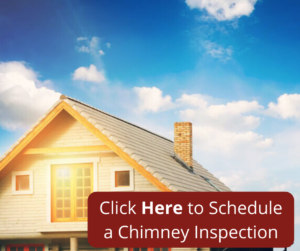How to Find a Chimney Sweep and Service Company: 5 Questions to Ask
If your home has a chimney, it is essential to keep up with its maintenance in order to keep it safe and working well. Though there are steps that you can take to keep up with your chimney’s maintenance on your own (check out our Homeowner’s Chimney Care Guide), it is important to involve a chimney professional as well. As a chimney owner, you should get your chimney inspected and swept by a professional each year. At Boston’s Best Chimney, we are a one-stop chimney service company. We not only perform residential and commercial chimney sweeps and inspections, but we also install chimney liners and caps, as well as rebuild chimneys, solve smoke problems and more. If you are in need of a chimney service, don’t hesitate to click here or call (781) 893-6611 to set up a free estimate.
 Are you wondering how to find a chimney sweep and service company? It can be challenging to find a company that is trustworthy and qualified to meet your needs, especially if you do not know the ins and outs of chimney care and how a chimney works. That is why we are giving you a list of questions to consider as you research local chimney professionals.
Are you wondering how to find a chimney sweep and service company? It can be challenging to find a company that is trustworthy and qualified to meet your needs, especially if you do not know the ins and outs of chimney care and how a chimney works. That is why we are giving you a list of questions to consider as you research local chimney professionals.
Research The Following:
1. How are the Company’s Reviews? Looking into the reputation that a company has built can be an excellent indicator of their reliability, customer service, and the quality of their past work. Check sites such as Google Reviews, Angie’s List, and Facebook Reviews to learn more about a company.
Ask Chimney Professionals These Questions :
2. Do You Have Business Liability Insurance and Worker’s Compensation? This will protect your home and property in the event of an accident. You should ask the chimney company that you are speaking with to have their insurance company directly send you a Certificate of Insurance to ensure that the chimney company’s insurance is valid and up-to-date
3. Will the Person Working at My Home Be a Certified Technician? The Chimney Safety Institute of America (CSIA) works to prevent chimney-related fires and gives education and training to industry professionals. It is an industry standard for all chimney professionals to be CSIA or CCP certified. You should request that professionals working at your home provide their certification numberfore they begin work on your chimney.
4. What Types of Inspections Do You Offer? As we mentioned, you should have your chimney inspected and swept by a professional annually to keep your home safe. Chimney inspections are also important when you are selling or transferring property, if you are replacing your heating equipment, or if there was an operating malfunction. There are several types of chimney inspections and a legitimate and experienced professional should walk you through the different types of inspections and explain which type of inspection is right for you.
5. How Long Has Your Company Been in Business? The more experience a company has, the better. Experts with years of knowledge will have the ability to accurately assess your chimney and handle any complications or unexpected situations that may come up.
At Boston’s Best Chimney, we have been in business since 1989. With years of experience and satisfied customers, we are ready to use our knowledge to help you. Click here or call us at (781) 893-6611 to schedule a free estimate or an inspection.
The post How to Find a Chimney Sweep and Service Company: 5 Questions to Ask appeared first on Boston's Best Chimney.

 Types of Chimney Cap Materials
Types of Chimney Cap Materials

 Chimney cracks let in water
Chimney cracks let in water Minor cracks often can be sealed with a waterproof coating to keep water from getting into the spaces.
Minor cracks often can be sealed with a waterproof coating to keep water from getting into the spaces. Remove chimney stains
Remove chimney stains
